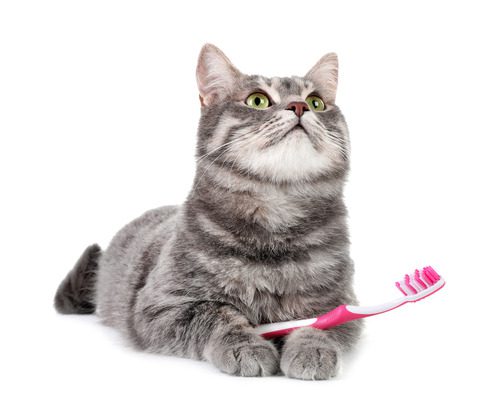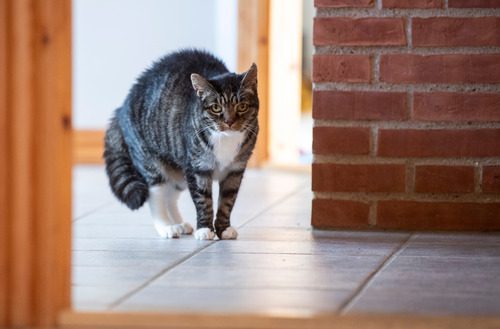Ways to Prevent Frostbite in Cats
Given the extreme cold weather most of the country has experienced, pet parents need to be especially aware of the risks of exposure in extreme temperatures. For cat parents, it is especially important to realize that as the weather turns colder, the risk of frostbite in cats increases. For those that live in a cold climate, this issue is sadly not uncommon, and pets may suffer severely from damage related to frostbite if it is left untreated.

5 Tips to Help Prevent Frostbite in Cats
If you have a cat, it’s important to understand the best ways to protect your feline family member from frostbite during the winter months. Read through the information below to learn more about keeping your cat safe from frostbite so you can protect him from this potential hazard in colder climates.
5 tips to keep in mind to help prevent frostbite in cats are:
Keep Your Cat Indoors
The best way to keep your cat from suffering from frostbite is to keep him or her indoors. An indoor cat is a lot less likely to be exposed to extreme cold conditions than an outdoor cat, and will likely not be near frostbite at any time if living indoors all the time.
With that said, however, your cat may still be at risk if he or she gets very wet on a cold day and is not allowed to dry and warm up properly. There may also be at risk if your cat lays in a very cold windowsill or on a porch exposed to the elements.
Go to a Warm, Dry Place
If you suspect your cat has frostbite, the first thing you need to do to prevent it from worsening is to take your pet to a warm, dry place. The cat needs to be placed ideally in a space that is separate from the chaos of your home and away from children or other pets.
Give your cat several minutes to try to warm up to room temperature. If the cold and brittle skin seems to slowly go back to normal, then the frostbite likely was not too serious. However, if the condition persists or worsens, you should bring your cat to the emergency vet.
Gently Warm with a Compress
If you suspect your cat has frostbite and if the skin hasn’t begun to turn black yet, try gently warming the affected area with a compress. Use warm but not hot water on a soft washcloth or towel and lightly press it against the affected skin, taking care not to press to hard or rub at all.
Once you have done this for several minutes, dry the area thoroughly without rubbing the skin. If the skin returns to its cold and brittle condition or the discoloration persists, you will need to take your cat to the emergency vet for treatment for frostbite.
Consider Walks on a Leash
If your cat likes to go outside in the yard, but it’s too cold to safely allow this, consider taking your cat on a short walk with a leash and harness. It can take some cats a little while to warm up to the idea, but most will eventually walk comfortably on a leash and harness—especially if they get some treats out of it the first few times.
By keeping your cat leashed on a backyard walk, you can limit the amount of time spent outside in the cold but still provide the backyard enrichment desired. This can be a great way to balance your cat’s boredom being inside with the necessary safety while outside.
Do Not Let Your Cat Stay Wet
If your cat gets wet for any reason, such as being out in the rain or getting a bath while indoors, do not let your cat stay wet. It’s best not to let your cat remain wet in any weather, but if it’s cold outside, your cat may be at risk of developing frostbite from the wet skin and the exposure to these colder temperatures.
In order to help prevent frostbite in cats in this situation, gently dry your cat with a towel after a bath or in any situation in which the cat has gotten wet. If the cat has been outside for a while in the cold and is very wet, take care not to rub the skin when drying, as there may already be damage from early stages of frostbite.
Monitor the condition closely over the next couple of days and be ready to go to the emergency vet if necessary.
Don’t Wait to Get Veterinary Care for Frostbite in Cats
As you can see, the best way to keep your cat safe from frostbite is to keep him indoors. However, this is not always possible, and some indoor cats may still be at risk of developing frostbite depending on where they are allowed to spend their time.
If your cat shows any of the signs of frostbite, take to the emergency vet right away. Signs of frostbite in cats include discoloration of the skin (especially gray or black skin changes), very cold or brittle skin to the touch, and blisters. These problems affect exposed skin such as a cat’s ears and paw pads, and should be treated as an emergency situation. When it comes to treating this condition, the sooner your pet gets the care they need, the better chance they have to make a full recovery.
Recent Posts
Can Dogs Eat Ham?
Ham is a popular meat found on many dinner tables, especially during the holidays. As a dog…
8 Signs and Symptoms of Diabetes in Dogs
Caring for a dog means being tuned in to the subtle changes that can reveal their overall…
Why Dogs Can’t Eat Chocolate and Tips for Keeping This Sweet Treat Out of Their Reach
Chocolate is a beloved indulgence for us, but for our dogs, it’s a hidden danger that can…
Why Cat Teeth Cleaning is Important For Your Pet’s Health
As a cat owner, you know how important it is to care for your feline friend’s overall…
Cat Body Language: A Guide To Understand What Your Cat is Telling You
Imagine trying to communicate without words, relying solely on subtle gestures, glances, and movements. This is how…
About Us
Heart + Paw was founded in 2018 by Chief Veterinary Officer Dr. George Melillo, who currently serves the Mid-Atlantic area. Heart + Paw offers a combination of veterinary care, pet grooming, and dog daycare to help be a resource in your pet parenthood journey.
We'd Love to Meet Your Four-Legged Friends
Find out how the friendly veterinary team at your local Heart + Paw can help your pets live longer, healthier lives by searching for a location near you.





